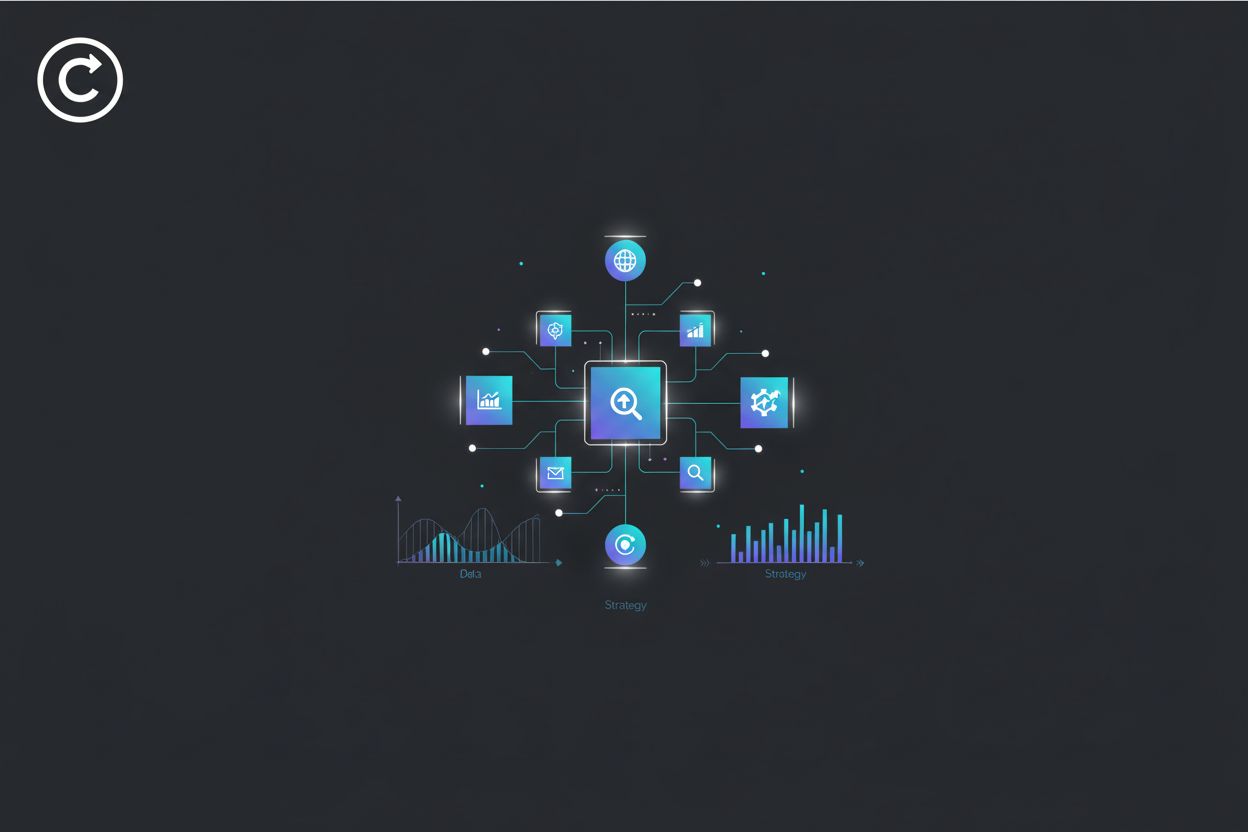Innovative Ideas and Use Cases for Interactive Media in Marketing
TL;DR
Introduction: The Rise of Interactive Media in Marketing
Interactive media is kinda like that choose-your-own-adventure book you read as a kid, but for, well, everything. Remember those things? Bet you don't see them anymore. They've kinda been replaced by digital alternatives and the evolution of interactive storytelling. Anyway, it's not just reading anymore, it's clicking, swiping, and making stuff happen, right now.
- Engagement is up, way up: People are tired of being talked at. They wanna do something. Interactive media lets them. Think quizzes, polls, configurators - ways to get your audience involved.
- It's not just for games anymore: Healthcare providers are using interactive tools for patient education. Retailers are letting you virtually "try on" clothes. Finance companies create interactive calculators to help you plan your retirement. It's everywhere!
- Attention spans are shrinking, quick: Static ads? Forget about it. Interactive content grabs attention and holds it, and that's why brands are using interactive elements like calculators to show savings – it makes the value instantly clear.
- Data, data, data: Every click, every choice, it's all data. You can find out what people really want, and then give it to them. And that's what its all about.
Interactive media ain't just a trend; it's how marketing is evolving. So, let's explore some innovative ideas for how you can take advantage of it.
Innovative Ideas for Interactive Media in Marketing
Okay, so you think interactive media is just a fad? Think again. Did you know that interactive content can generate 4-5 times more page views than static content? That's a real number. Let's jump into some innovative ideas, beyond the usual quizzes and polls, for interactive media in marketing.
Interactive videos are so much more than just slapping a few clickable buttons on a regular video. We're talking about branching narratives, where the viewer's choices literally change the course of the video. It's like a choose your own adventure, but with video!
- Product Demos that Adapt: Imagine a software demo where the features shown depend on what the user selects as their biggest pain points. No more slogging through irrelevant stuff.
- Training Modules that Personalize: Instead of a one-size-fits-all training video, interactive elements can assess the viewer's understanding and adjust the content accordingly.
- Personalized Storytelling for Brands: Brands can craft stories where the viewer's choices reveal different aspects of the brand's values or history. It’s way more engaging than just watching a commercial, right?
AR isn't just for catching Pokemon anymore. It's moved past that, thank god. It's about blending the digital and physical worlds to create immersive experiences. And that's kinda cool.
- Virtual Try-Ons: Clothes, makeup, glasses - all can be virtually "tried on" using AR apps. This reduces returns and increases customer confidence in their purchases.
- AR Product Visualization: Furniture companies can let customers see how a couch would look in their living room before they buy. Ikea does this, actually.
- Gamified AR for Engagement: Brands can create AR games that reward users for interacting with their products or visiting their stores.
Quizzes aren't just for Buzzfeed anymore, okay? When done right, they can be a goldmine for lead generation and personalized marketing.
- Value-Driven Quizzes: The key is to offer real value to the user. Instead of "Which Disney Princess are You?", think "What's Your Marketing Style?" or "Assess Your Financial Health." People are more willing to engage if they get something useful in return.
- Personalized Marketing Messages: Quiz results can be used to segment your audience and deliver targeted messages. Someone who scores high on "risk-averse" in a financial quiz might receive different offers than someone who's a "high roller."
- CRM Integration is Key: Integrating quizzes with your CRM system is crucial because it allows for automated lead nurturing, personalized follow-up campaigns, and better overall customer data management. You can automatically capture leads and segment your audience.
360-degree content offers a fully immersive viewing experience. It's like being there, without actually being there.
- Virtual Tours: Real estate companies can offer virtual tours of properties, allowing potential buyers to explore the space from the comfort of their homes.
- Product Showcases: Showcasing products in a 360-degree view allows customers to examine every detail, increasing their confidence in the purchase.
- Immersive Storytelling: Using 360-degree video to tell a brand's story can create a powerful emotional connection with the audience.
Let's be honest, most infographics are boring. Interactive ones? Not so much!
- Accessible Data: Interactive infographics can make complex data more accessible and engaging by allowing users to explore the information at their own pace. For example, an interactive infographic about climate change could allow users to filter data by region or time period, making it easier to understand specific impacts.
- User-Driven Exploration: Users can filter, sort, and drill down into the data to find the insights that are most relevant to them.
- Highlighting Key Insights: Interactive elements can be used to draw attention to key findings and trends, making the data more memorable.
Interactive media is all about giving the user control and making them an active participant in the experience. And it's more than just a trend, it's a way to make marketing more personal. Let's explore some innovative ideas for how you can take advantage of it.
Real-World Use Cases: Brands That Are Doing It Right
Okay, so you're probably wondering if any real companies are actually pulling this interactive media stuff off, right? Well, yeah, a few are. Let's look at some that are genuinely doing it right, instead of just talking about it.
Sephora is killing it with their Virtual Artist app. I mean, who wants to actually try on lipstick after like, five other people have? It's kinda gross. This app uses AR to let you virtually try on makeup. You just point your phone at your face, and bam, you're rocking a new shade of lipstick or eyeshadow.
- Try Before You Buy: Customers can see what different products look like on them before they buy, increasing purchase confidence.
- Reduced Returns: Less guessing means fewer returns, which saves Sephora money and hassle.
- Increased Engagement: It's fun! People spend more time on the app, exploring different looks.
Remember "Bandersnatch"? That Black Mirror episode on Netflix where you made the decisions for the main character? That was wild. It was also a brilliant example of interactive video.
- Branching Narrative: The story literally changed based on your choices.
- Social Media Buzz: Everyone was talking about it, comparing endings, and sharing their experiences. It was free advertising, basically
- High Engagement: People were way more invested in the story because they were actively participating. I know I was!
Okay, don't laugh, but Buzzfeed quizzes are actually genius for lead generation. I know, I know, they seem silly, but they're addictive. The key is to make them valuable and shareable.
- Personalized Results: People love to learn about themselves, even if it's based on a silly quiz.
- Shareable Content: If the results are funny or insightful, people are more likely to share them on social media.
- Data Collection: Buzzfeed collects valuable data about their audience through these quizzes, which they can use for targeted advertising. Sneaky, huh?
Volvo did this cool thing where they used 360-degree video to give people a virtual test drive of their XC60. You could explore the car's interior and exterior, and even "drive" it through different environments.
- Immersive Experience: It was way more engaging than just looking at pictures or watching a regular video.
- Increased Interest: People who experienced the virtual test drive were more likely to visit a dealership for a real test drive.
- Showcase Features: They could highlight key features of the car in an interactive way.
These are just a few examples of brands that are using interactive media effectively. The key is to be creative, offer value, and make it fun.
Implementing Interactive Media: A Step-by-Step Guide
So, you've got this awesome interactive media campaign idea brewing, right? Now that we've explored some ideas and seen how others are doing it, let's get into how you actually do it. Here's a step-by-step, no-bs guide.
First things first, what's the point? Is it to get more leads, boost engagement, or just, y'know, look cool?
- Define specific, measurable goals. Don't just say "increase engagement." Say, "Increase quiz completion rate by 20% in Q3." Other examples include: "Increase lead generation by 15% through interactive calculators in Q2," or "Improve time spent on page by 30% with an interactive product configurator this quarter," or "Drive 500 virtual try-ons via AR filters by year-end." Numbers are your friend.
- Know your audience. Are they Gen Z glued to TikTok, or baby boomers scrolling Facebook? Tailor your content to where they actually hang out. I can't stress enough how important this is.
- Set a budget. Interactive stuff can get pricey, especially if you're doing custom development. Be realistic about what you can afford.
Okay, so you know why, now what? There's a ton of options, but don't get overwhelmed.
- Consider your resources. Got a video team? Interactive video might be a good fit. No design skills? Maybe start with a simple quiz platform.
- Match the format to your goals. Trying to educate customers? An interactive infographic could be killer. For example, an interactive infographic explaining a complex service could allow users to click on different sections to get more detailed explanations or watch short video clips. Want to generate leads? A personality quiz is a classic for a reason.
- Think about the user experience (UX). Is it easy to use on a phone? Does it load quickly? If it's clunky, people will bail.
This is where the magic happens. But, seriously, don't half-ass it.
- Focus on value. Give people a reason to interact. Offer useful information, personalized insights, or just plain entertainment. No one cares about your product if it's not offering value.
- Keep it concise. Attention spans are shorter than ever. Get to the point, quick. Use visuals, short paragraphs, and clear calls to action (ctas).
- Make it shareable. If people love it, they'll share it. Design your content to be easily shared on social media.
The Future of Interactive Media in Marketing
Okay, so picture this: you're at a party, and instead of just standing there awkwardly, you got ai doing all the small talk for you. Kinda creepy, but also kinda cool, right? That's where interactive media is headed.
- The rise of ai-powered interactive experiences: ai isn't just for chatbots anymore. Imagine ai that personalizes interactive content in real-time based on user behavior. So, like, a learning platform that adapts the lesson based on how quickly you're grasping the material. That's where this is going.
- The increasing importance of personalization: Generic marketing is dead. Fact. People want experiences tailored to them. Interactive media makes this easy. Think personalized product recommendations based on quiz results, or interactive ads that change based on your location.
- The convergence of interactive media with other marketing technologies: Interactive media isn't a silo. It's gotta play nice with your crm, your email marketing, your social media, all of it. api integrations are gonna be key here. API integrations, which allow different software systems to communicate with each other, will be essential for seamless data flow and personalized user journeys.
What's next? Well, it ain't just about knowing the trends, it's about getting ready to use them.
Conclusion
So, we've been yakking about interactive media, like, a lot. But what's the real takeaway here?
- Engagement Boost: Interactive media grabs attention way better than static stuff. As highlighted in the introduction, it can get you 4-5 times more page views.
- Personalization is key: People love stuff tailored just for them. Quizzes that give personalized recommendations? AR apps that let you virtually try on clothes? That's the good stuff.
- Data Goldmine: Every click and interaction? It's all data. Use it to figure out what your audience really wants.
Honestly, if you're not playing with interactive media, you're missing out. So, go experiment, and see what sticks! Interactive media offers a powerful way to connect with your audience on a deeper level and drive real results.






